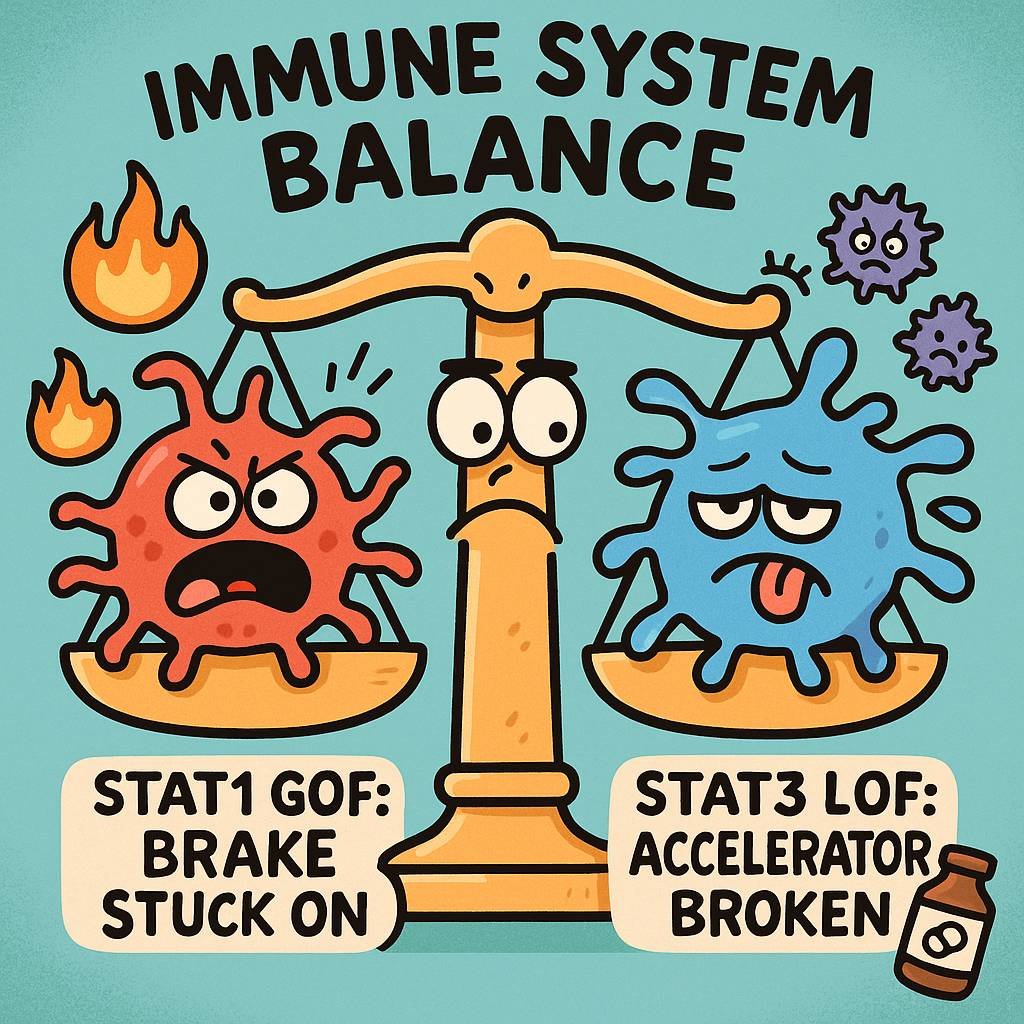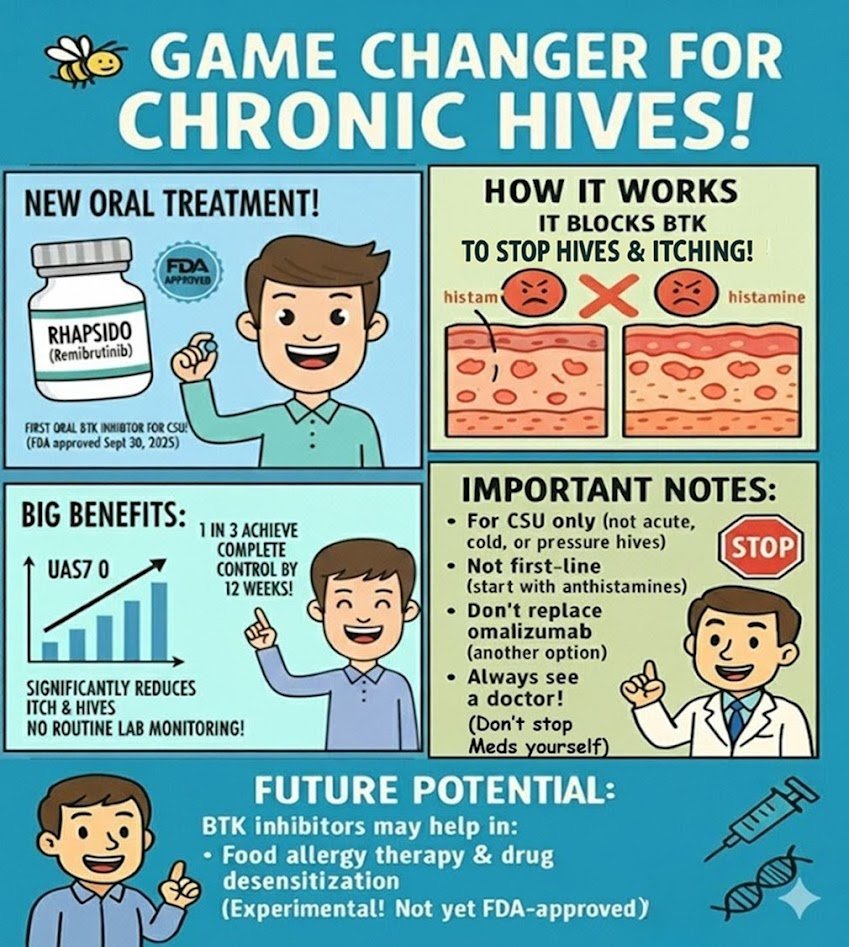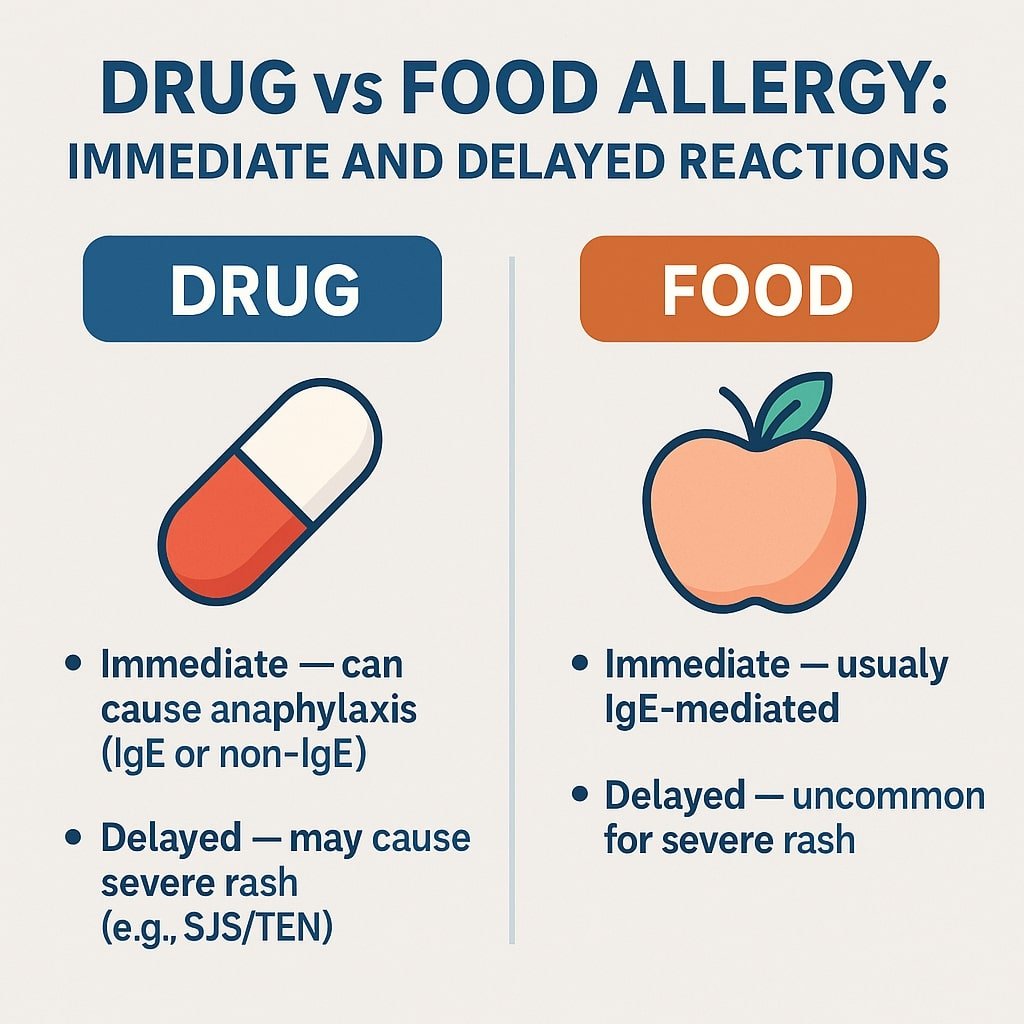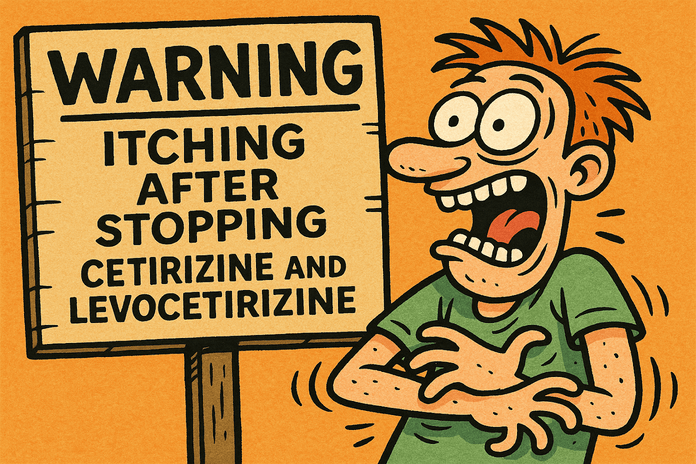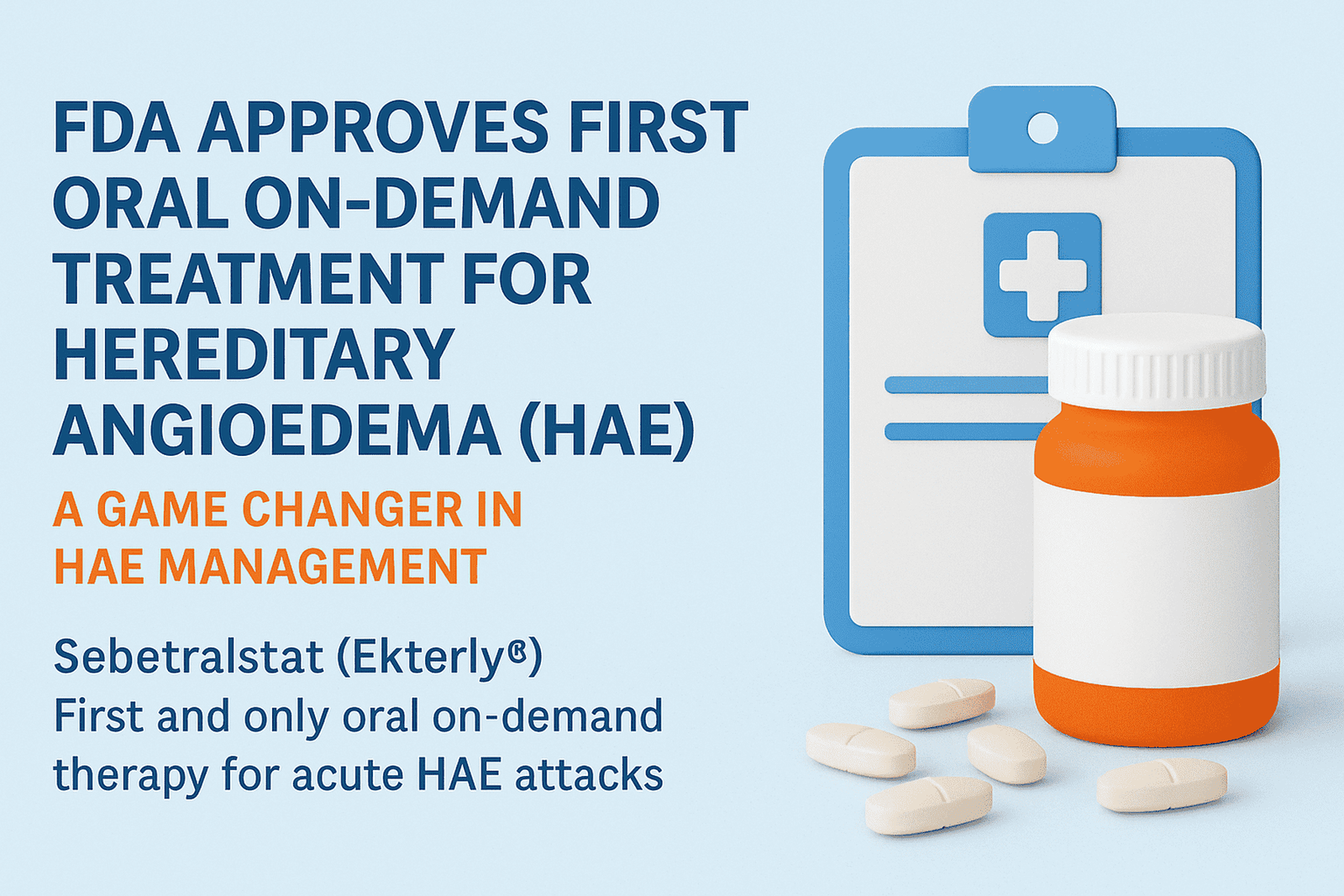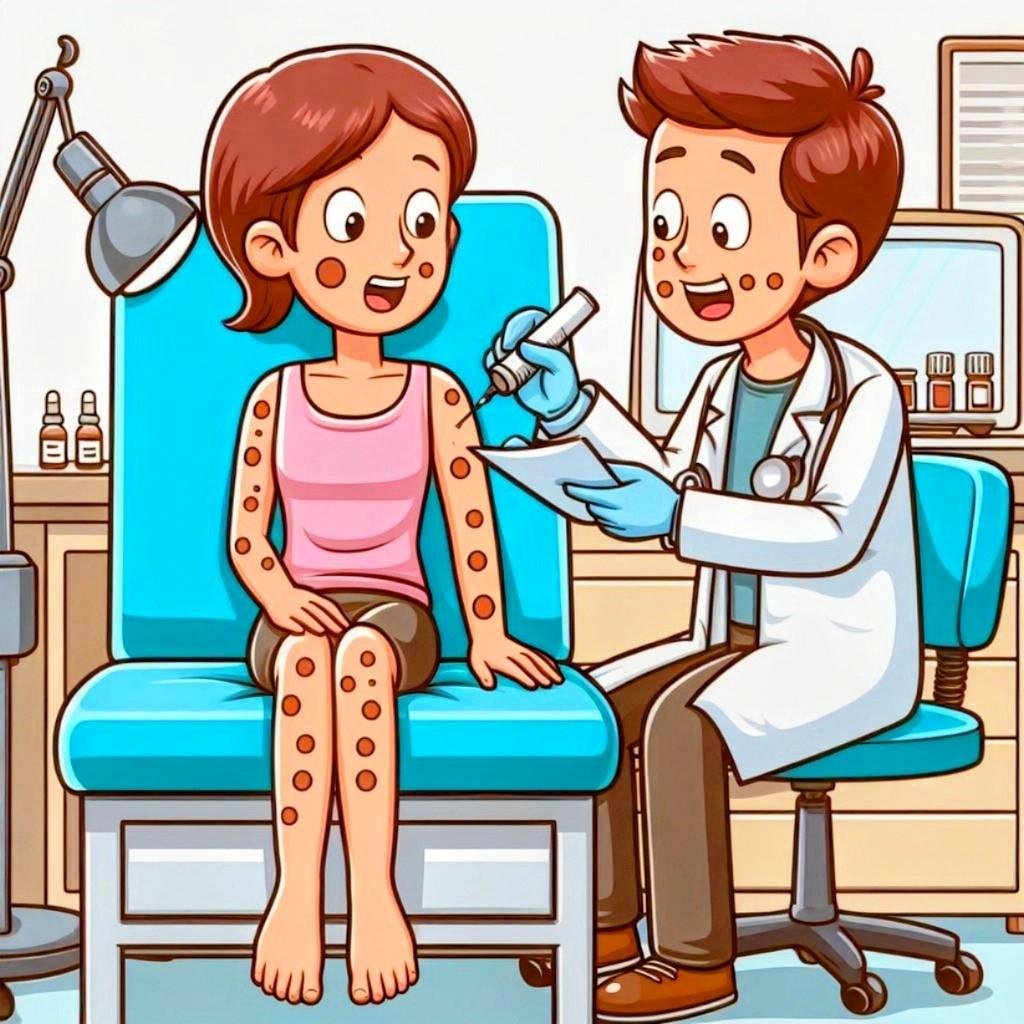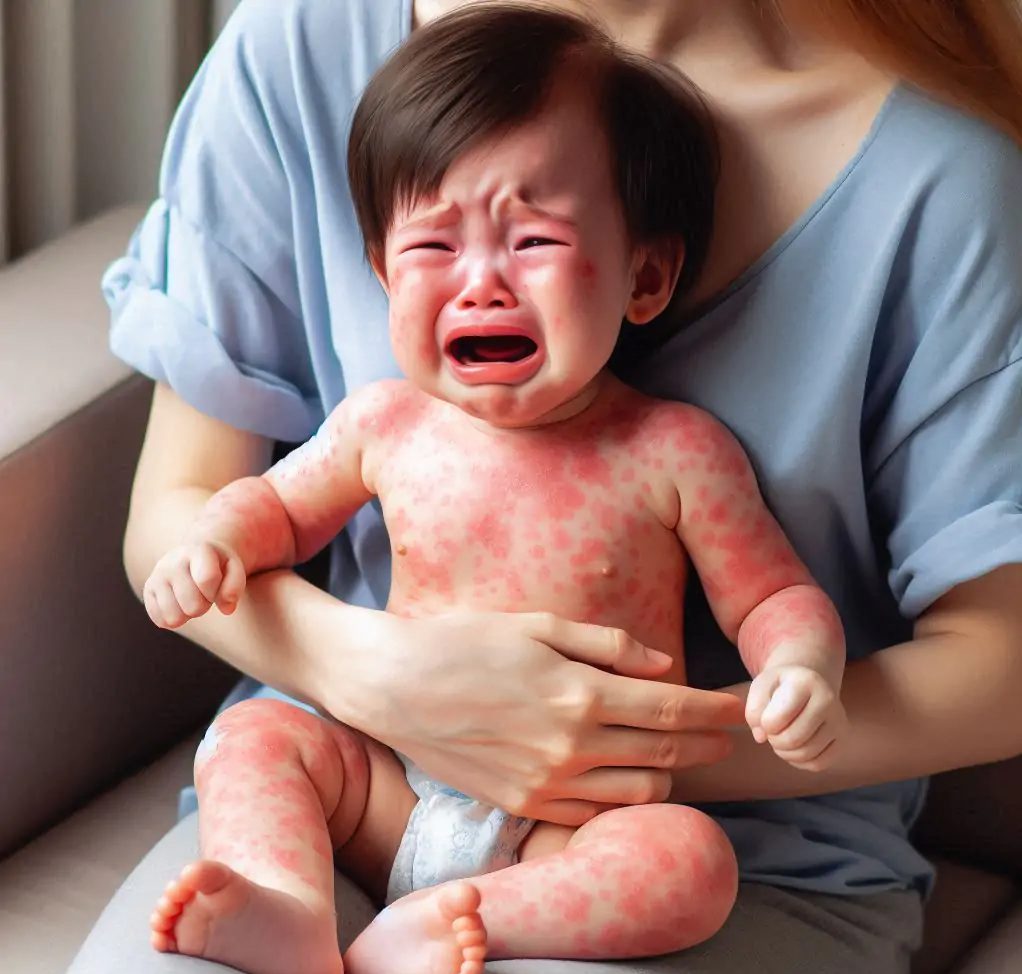Educational Content Disclaimer This article provides educational information about rare immunodeficiency disorders. It is not medical advice and should not replace consultation with qualified healthcare providers. Individual presentations vary, and management should be personalized under medical supervision. 🔗 Why This Matters for Drug Allergy Detective At Drug Allergy Detective, we focus on helping you understand drug allergies and hypersensitivity reactions. But to truly understand why certain people react to medications differently, we need to explore the immune system’s foundation. This article explores two rare genetic conditions that represent opposite extremes…
Read MoreCategory: News and Perspectives
News and perspectives on drug allergy concepts, diagnosis, and management
Game Changer: FDA Approves Rhapsido (Remibrutinib), the First Oral BTK Inhibitor for Chronic Hives (CSU)
For years, patients with chronic spontaneous urticaria (CSU) who didn’t respond to antihistamines had only injections as the next step. On September 30, 2025, the U.S. Food and Drug Administration (FDA) approved remibrutinib (brand name Rhapsido), the first oral BTK inhibitor for adults with CSU. This approval offers patients — and doctors — the first convenient oral option beyond antihistamines. What Is Chronic Spontaneous Urticaria (CSU)? Why an Oral Option Matters Until now, patients had only these alternatives: Patients have long asked for a safe oral treatment that avoids injections…
Read MoreDrug vs Food Allergy: Immediate & Delayed Reactions
Drug vs Food Allergy: Why Medications Can Cause Both Immediate and Delayed Reactions — While Foods Uncommonly Cause Severe Delayed Reactions This article is for educational purposes only. Always consult healthcare providers for personalized medical advice. Patients often ask:“Why can medications cause both rapid allergic reactions like hives or anaphylaxis and dangerous delayed reactions such as Stevens–Johnson Syndrome (SJS) or Drug Reaction with Eosinophilia and Systemic Symptoms (DRESS), while food allergies almost always appear immediately?” The difference lies in how the immune system processes drugs versus foods — and in…
Read MoreFDA Warns of Severe Rebound Itching After Stopping Cetirizine (Zyrtec) or Levocetirizine (Xyzal): What You Need to Know
🛑 New FDA Safety Alert: Antihistamine Withdrawal Can Trigger Severe Itching In May 2025, the U.S. Food and Drug Administration (FDA) issued a new safety warning about rebound itching after stopping cetirizine (Zyrtec) or levocetirizine (Xyzal)—two of the most commonly used antihistamines. This severe itching reaction, often mistaken for allergy relapse, may occur especially in people who have taken the drug daily for several months. 🔎 Key Findings from the FDA Investigation Between April 2017 and July 2023, the FDA identified 209 confirmed cases globally—197 in the U.S.—involving moderate to…
Read MoreSebetralstat: The First Oral Treatment for HAE Approved by FDA
Oral HAE treatment is now FDA-approved. On July 7, 2025, Sebetralstat (Ekterly®) became the first oral on-demand therapy for acute attacks in hereditary angioedema (HAE), marking a major shift in how this rare condition is managed. Hereditary Angioedema (HAE) is a rare genetic disorder that causes unpredictable, recurrent episodes of swelling, often affecting the face, throat, gastrointestinal tract, and extremities. If untreated, these attacks can be life-threatening. Until recently, on-demand treatment for HAE required injections only. While berotralstat (Orladeyo®) became the first oral medication approved for prophylaxis in 2020, acute…
Read MoreThe Basophil Activation Test (BAT): A Game-Changing Tool for Food Allergy Diagnosis
Diagnosing food allergies accurately remains one of the biggest challenges in allergy medicine. Traditional approaches like skin prick tests (SPT) and specific IgE blood tests can tell us if someone is sensitized to a food, but they don’t always predict whether that person will actually have an allergic reaction. Meanwhile, oral food challenges (OFCs)—the gold standard—are time-consuming, expensive, and carry real risks of severe reactions. Enter the Basophil Activation Test (BAT): a revolutionary diagnostic tool that’s changing how we approach food allergy diagnosis. 🧪 What Makes BAT Different? BAT is…
Read MoreBeyond the Surface: Rethinking Rechallenge in Suspected Drug-Induced SSLR and Serum Sickness
IntroductionDrug-induced serum sickness-like reactions (SSLR) are a complex and often confusing condition for both patients and healthcare providers. These reactions, usually triggered by medications like beta-lactam antibiotics, can cause rash, fever, and joint pain. While SSLRs are generally thought to be milder than true serum sickness, which is caused by immune complexes circulating in the blood, the two conditions can look very similar. The real challenge? In most cases, we rely on patient history alone to make the distinction, and that can be dangerously misleading. The Diagnostic Dilemma: SSLR vs.…
Read MoreWelcome to Drug Allergy Detective: Your Guide to Drug Allergy Mastery
Unsure about managing drug allergies? Learn effective strategies for communication, avoidance, and specialist care.
Read MoreNew Sequential Patch Testing for Fixed Drug Eruption (FDE) Diagnosis
Background Fixed drug eruption (FDE) is a cutaneous adverse drug reaction characterized by erythematous plaques or blisters that recur at the same site upon re-exposure to the causative drug. It can leave residual pigmentation and, in severe cases, may present as generalized bullous fixed drug reaction (GBFDE). Objective The study aimed to evaluate the sensitivity of a standardized allergy workup for diagnosing the cause of FDE, with an emphasis on in situ repeated open application tests (ROATs). Methods A retrospective multicenter study analyzed the allergy workup practices for FDE diagnosis…
Read MoreThe Hidden Connection: Chronic Urticaria, Autoimmune Disorders & Hormonal Imbalance
Introduction to Chronic Urticaria Chronic urticaria, often referred to as hives, is a condition marked by the recurrent appearance of itchy welts on the skin. These welts, or hives, can vary in size and may appear anywhere on the body. The condition becomes chronic when these symptoms persist for six weeks or longer, distinguishing it from acute urticaria, which typically resolves within a shorter period. While the exact cause of chronic urticaria remains elusive in many cases, it is generally understood to be a complex interplay of factors. Symptoms of…
Read More
